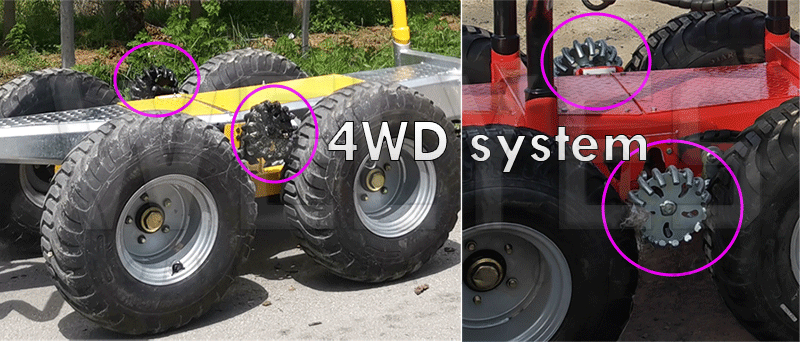6.5m forest trailer timber crane
6.5m crane and tracor trailer Source of power and transmission , it is usually powered by adapted construction machinery, such as farm tractor, Trucks, excavators, loaders or Independent diesel station. PTO system can enhance the motivation of the machine to drive log crane. Through the hydraulic system, the mechanical energy is converted into hydraulic energy, which is transmitted to the hydraulic motor or cylinder of the wood grabber through the high-pressure oil pipe.
The hydraulic oil drives the hydraulic motor or cylinder inside the log trailer Crane, converts the hydraulic energy into mechanical energy, and controls the opening and closing of the gripper, rotation and other actions
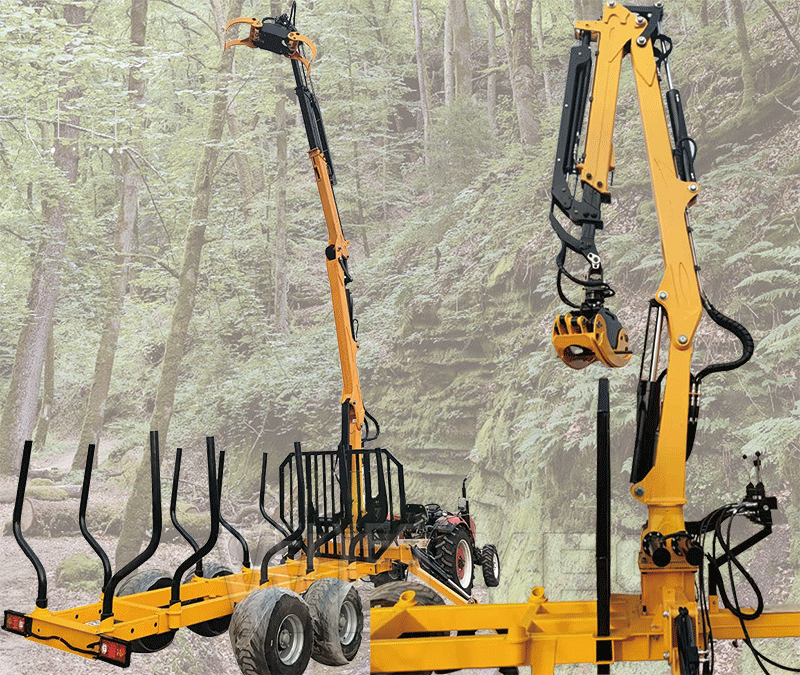
6.5m tractor log trailer and crane,possibly also called wood grabs, are mainly used in forestry, wood processing or logistics equipment for handling and handling wood. The main function of the wood grabber
1. Gripping and clamping
Through hydraulic or mechanical drive, the gripper closure is used to achieve fast grasping and stable clamping of wood, which is suitable for different forms such as logs, branches, and wood.
2. Rotate and adjust the angle
Equipped with 380° rotation function, the gripping direction can be flexibly adjusted to adapt to complex working environments.
3. Handling and loading and unloading
Cooperate with cranes, Tractors, excavators or loaders to efficiently complete the short-distance transfer of timber, vehicle loading and unloading and yard finishing. Usually it matches PTO system to enhance the power of engine to drive the log grabber and trailer
4. Sorting and sorting
Precise control of gripper opening and closing, sorting or arranging timber by size.
5. Stacking and destacking
Realize the automatic stacking or dismantling of timber to optimize the utilization of storage space
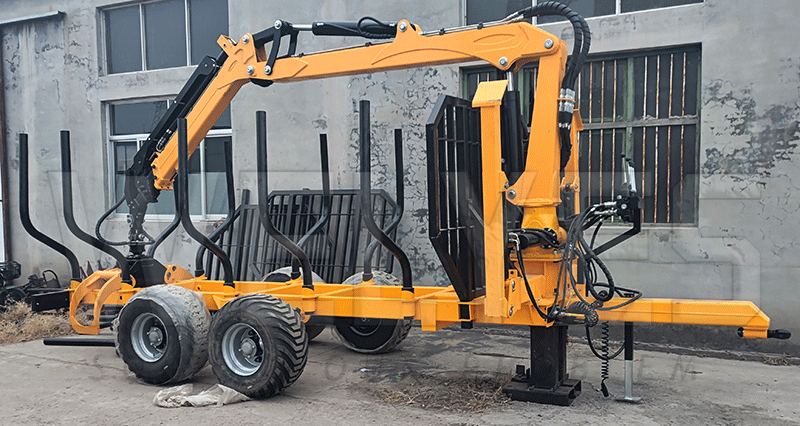
| Model | TC650L |
| Arm length (m) | 6.5 |
| Rotary torque (kn.m) | 18 |
| Rotation angle | 380° (left190°, right190°) |
| Number of rotating cylinders(piece) | 4 |
| Lifting force at 4 m (kg) | 2000 |
| Lifting force at full length (kg) | 1100 |
| Grab swing brake from side to side | yes |
| Grab swing brake back and forth | yes |
| Telescopic boom structure | yes (one section telescopic boom, telescopic stroke 1.3m) |
| Boom 360° rotary valve | 1pcs |
| One-way throttle valve for 360° rotation of boom | 2pcs |
| balance valve | 1pcs |
| Recommended hydraulic oil flow (l/min) | 45-55 |
| Working pressure (mpa) | 20 |
| Standard rotary motor | GR-30F (3T flange type) |
| The standard grab | TG20 (Maximum Opening 1260mm) |
| Total weight (no leg, valve block) | 1000kgs |
1. Grasping and Clamping
Hydraulic cylinder drive: Hydraulic oil pushes the piston rod to extend and retract, driving the movement of the grab claw linkage mechanism to achieve the closing and opening of the grab claws.
Clamping force control: By adjusting the pressure of the hydraulic system (such as setting the relief valve), the clamping force can be precisely controlled to prevent damage to the wood.
Grab claw design: The sawtooth or plum blossom claw structure increases friction, and special materials (such as high manganese steel) enhance compressive resistance and wear resistance.
2. Rotating Function
Rotary support structure: An internal hydraulic motor drives the rotary support bearing, enabling the wood grabber to rotate 360° without dead angles.
Central hydraulic distributor: Hydraulic oil is continuously delivered to the rotating part through a rotary joint to avoid pipe entanglement.
3. Lifting and Moving
Arm linkage: In coordination with the main machine arm, the height, angle, and working radius of the wood grabber are adjusted through the extension and retraction of the hydraulic cylinder.
Drive of the traveling chassis: If it is a dedicated wood grabber chassis, the hydraulic motor drives the tracks or tires to move, allowing for adjustment of the working position.
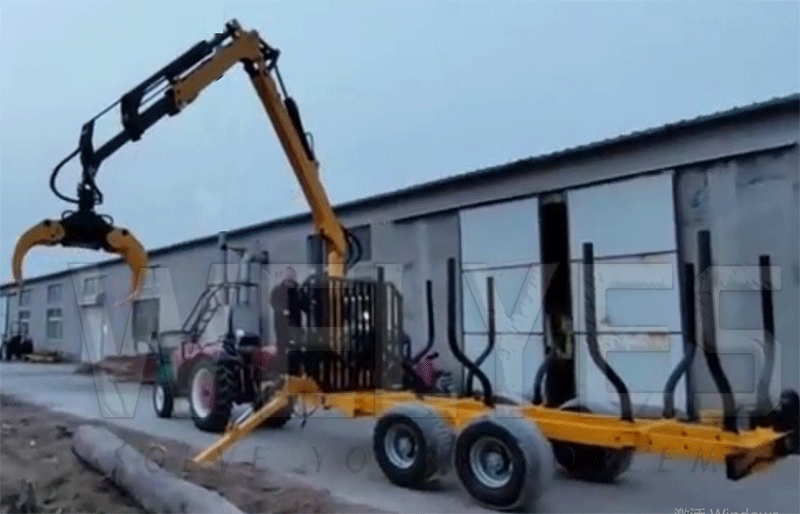
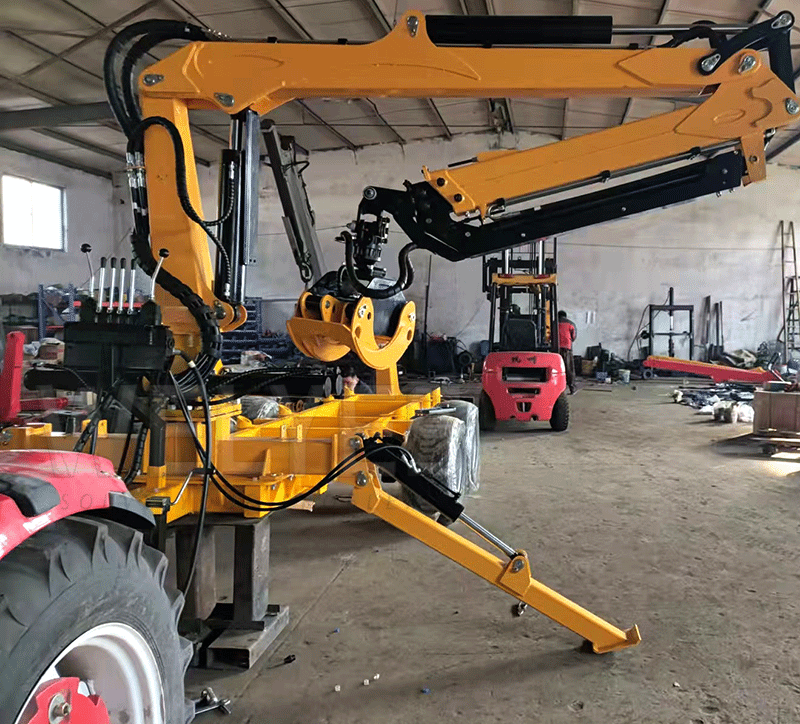
Power input
The log grabber itself does not have a separate power system and is usually powered by a suitable construction machine such as an excavator, loader or special chassis.
The main engine converts mechanical energy into hydraulic energy through a hydraulic pump, which is transmitted to the hydraulic motor or cylinder of the wood grabber through the high-pressure oil pipe. Energy conversion
The hydraulic oil drives the hydraulic motor or cylinder inside the wood grabber, converts the hydraulic energy into mechanical energy, and controls the opening and closing of the gripper, rotation and other actions
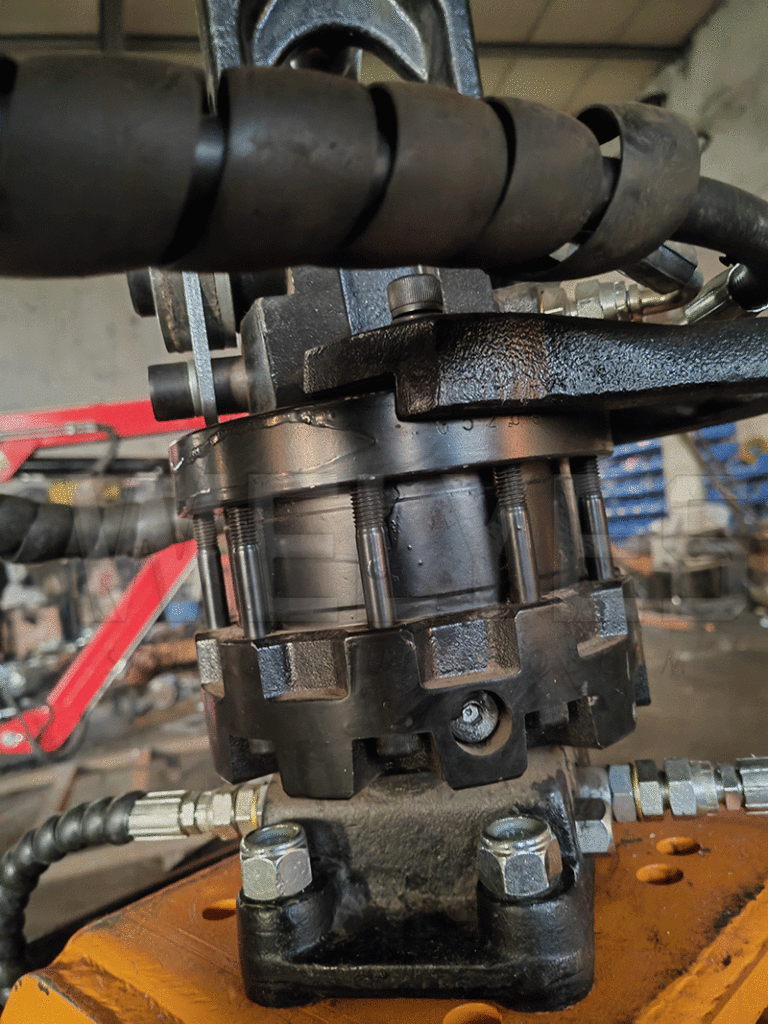
Key components of the hydraulic system
1. Hydraulic pump (from the main engine)
Provides high-pressure hydraulic oil. The flow rate determines the speed of the action, and the pressure determines the size of the output force.
2. Control valve group
The multi-way valve controls the flow direction of the hydraulic oil, enabling independent or combined operations such as opening and closing the gripper, rotation, and lifting.
3. Hydraulic cylinder/motor
The cylinder is responsible for linear motion (such as opening and closing the gripper), and the motor is responsible for rotational motion.
4. Relief valve and safety valve
Limit the system pressure to prevent overload and damage to the equipment; cut off the oil circuit in emergency situations to ensure safety.
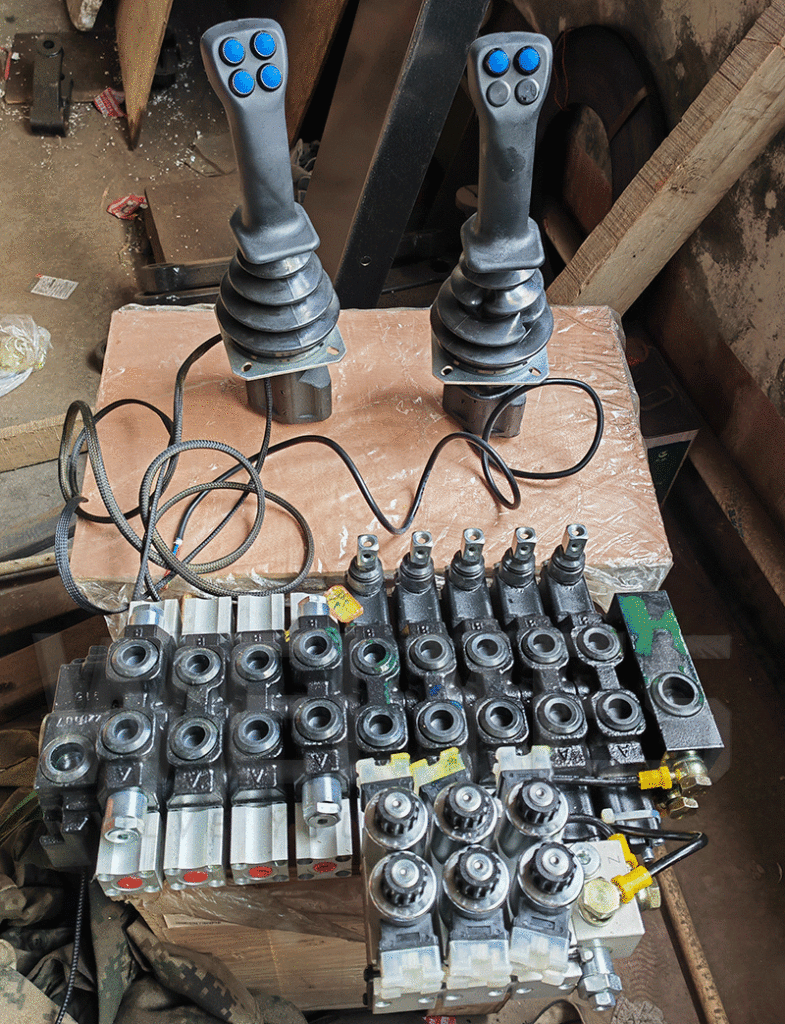
Log Trailer Transportation function: it can load the wood and timber from crane to transport other place which is much more convenient for wood deliver to destination. In rural or mountainous areas with poor road conditions, it can replace trucks to complete short-distance and efficient transportation, and adapt to complex terrain such as mud and ramps. Open design with a load capacity of 10 tons.
Towing function: The trailer is attached by a towing hook or three-point hitch
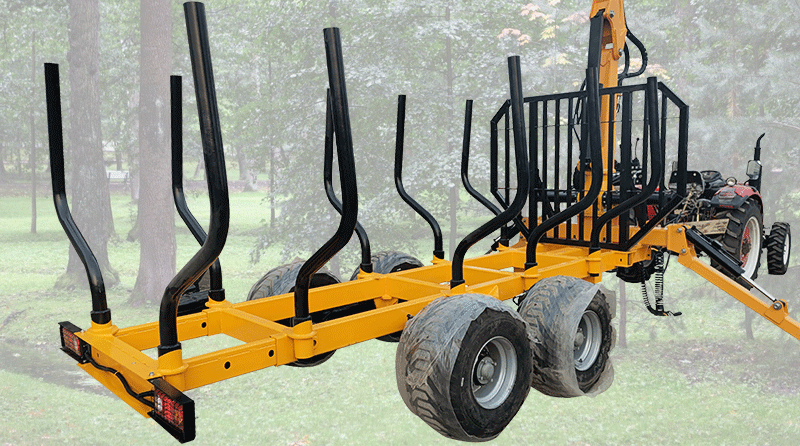
Power Transmission: Power is provided on the trailer via PTO (Power Take-Off Shaft).
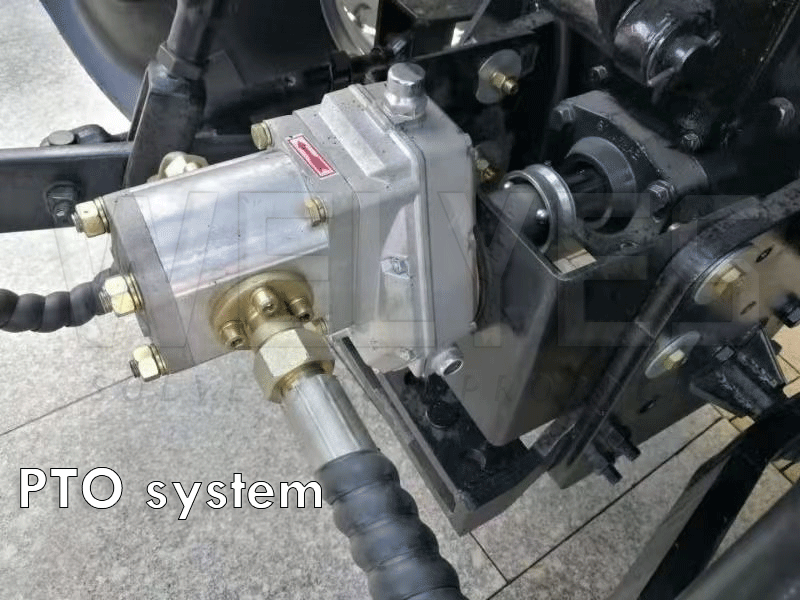
Air brake system: Due to their strong braking power and fast reaction time, air brake systems are commonly used in large trucks, buses and heavy machinery. These vehicles require more braking power and faster reaction times to ensure safety. As for the oil brake, Oil brake : Due to its simple structure and soft response, the oil brake system is more suitable for small cars and SUVs. Due to their small size and light weight, these vehicles do not require much braking force, so the oil brake system is more suitable
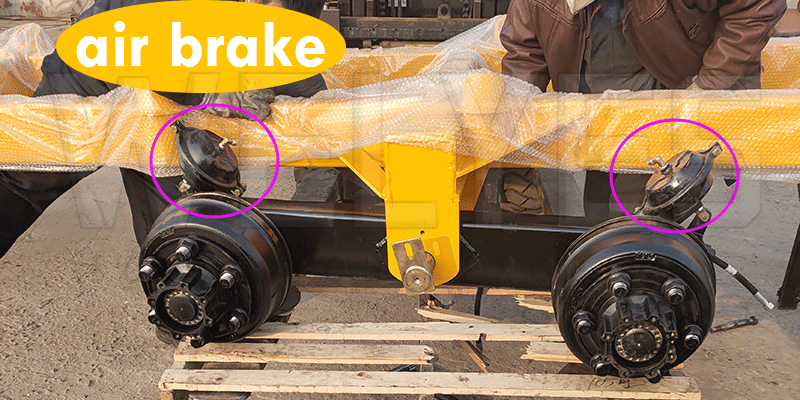
4WD System It can improve the traction and passability of the vehicle and is suitable for various road conditions.
The four-wheel drive performs better on snow slopes, and the power covers all four wheels to avoid power interruption caused by the slippage of a single drive wheel;
It can also maintain continuous power output on rough and muddy roads, avoid power loss caused by single-wheel skidding, and have strong adaptability to complex road conditions
